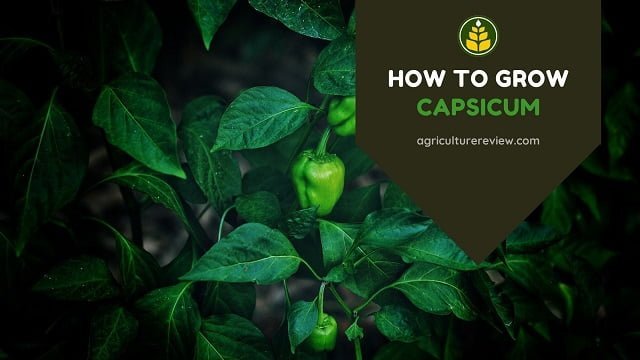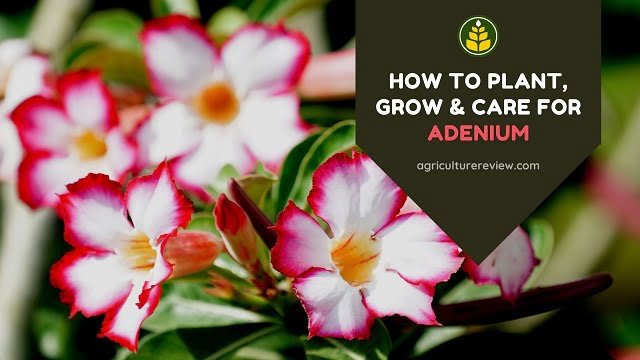Are you excited to know about how to grow onion. If, yes, then you are on the right page. In this article एग्रीकल्चर रिव्यू will guide you on how to grow onion in your garden.
Many people still think that onion can grow only in large farms. But it is not true. Many gardeners, including me loves to grow onion. I feel it as a fun and learning activity. Moreover, home grown सब्ज़ियाँ are healthy and awesome in taste.
Even if you are new to gardening, after reading this article you will be able to plant onions in your garden successfully. But, before discussing about grow guide let us learn something about onions.
Table of Contents
परिचय
Onion is a vegetable plant that can be biennial or perennial. But we grow it as an annual plant. All over the world, we use onion is various dishes. In countries like India, where spice is the trend, no one can really think of tasty and delicious cooked food without onions.
Cultivated onions are of various types. Yellow and brown types onion are used in European cuisine, and are generally sweeter than the other varieties. Red or purple onions have strong pungent flavour, they are generally used in Asian cuisine. White onions are milder in flavour, and are used in Mexican cuisine.
Onion has about 89% water, 9% carbohydrates, and nearly 1% protein. And you know what is more fascinating about onions? It is growing onions in your home garden. Nothing is more satisfactory than the self grown vegetables. So let’s start.
How to grow onion?
Growing onion is not a rocket science. But, you will need to know about important points to grow them successfully. If you want to take your growing experience to next level then keep reading this awesome article.
In this article I will guide you from sowing of seeds, watering, sunlight, fertilizer requirements to pest and disease management. If you just follow these steps correctly then there gonna be lots of onion in your garden.
I am not going to reveal any secrets or hacks but I can tell you the proven ways to grow onions. So let’s start from the very basic step that is growing season. Many people do this common mistake. They neglect the growing season.
But I want to make it very clear that if you want to be successful in growing plants then find out the growing season of the plant.
मौसम
Hurray! There is a good news for you. You can grow onions in nearly every months except in extreme cold or hot climate. Depending on the variety, you can grow onion in kharif as well as Rabi season.
Onion is primarily a temperate region plant, but you can also grow it in tropical to sub-tropical region. If you are living in regions that have milder climate then put a big smile on your face.
You can grow onions from February to November. In hilly areas or temperate regions you can grow onion from September to December.
Selection of Variety
Success in growing onion also depends on the selection of variety.
Therefore, I personally recommend you to find out the best variety for your region. You can easily find about them on google. Once you know about the best variety then chances of crop failure become very less.
The best way is to visit the nearest plant selling stores. If they sell vegetable plants then they will have knowledge about suitable variety for your region. Although, you can also use sprouted bulbs of onion from your kitchen for plantation.
But I do not recommend to grow onions from kitchen if it is your first time. You can be lucky sometime but onions sold in the market may have been transported from some other places or country.
Although, if nothing is there in the plant market then you can surely start growing onion bulbs from kitchen.
मिट्टी का मिश्रण
Onion plant loves well drained, loose sandy loam soil that has good moisture holding capacity, and is rich in organic matter. If your place already has sandy loam soil then you will only need to add organic fertilizers.
But if your place has clayey or heavy soils then prepare potting mix with 40% normal garden soil + 20% river sand + 40% any organic compost. Mix them thoroughly and your potting mix is ready.
You can also grow onions on raised beds, directly in the ground soil. For that you can add organic manure to the soil one week before sowing. I recommend you to use Ghan-jeevamrut या waste decomposer with any organic compost.
और पढ़ें: WHAT IS GHANJEEVAMRUT AND ITS BENEFITS?
और पढ़ें: WHAT IS WASTE DECOMPOSER? AND ITS USES
If you are growing in raised beds then have good drainage facility. Waterlogged soil can damage your crop!
गमले का चयन
I will not recommend you to use small pots. You can select medium to large sized rectangular pots for best results. Make sure that the pot has at least 3 to 4 drainage holes at the bottom.
Depth of the pot should be more than 10 inches. This will help the onion bulbs to grow properly in the pot. You can choose earthen, cemented to plastic pots for this purpose.
प्रसार के तरीके
After preparing the potting mix, and selecting the pot, next step is propagation. You can grow onions from seeds, sets, or transplants. Sets are small dormant bulbs. Growing onions from bulbs is beneficial and effective to harvest foliage leafy green part.
However, you can also grow onion from seeds to get healthy bulbs but the plant will take little extra time to mature.
Propagation from Seeds
Purchase high quality and disease resistant seeds from the plant store. Fill the growing container with potting mix and leave one to two inch space at the top for watering.
Gently moist the soil before sowing of seeds. Broadcast the seed on the potting mix in the pot. Cover the broadcasted seeds with a thin layer of potting mix. Keep the pot under direct sunlight. And add water gently whenever the top layer seems dry.
Within 7 to 10 days you will notice new seedling coming out from the seeds. After 40 to 50 days of sowing, you can start transplanting your seedlings.
Propagation form Bulbs
I recommend you to purchase high quality and disease resistant variety onion bulbs from the plant store. If you do not find it then only try to grow it from onions used in kitchen.
Make sure that the bulb contain rooted area at the bottom and is of small size. Do not select large sized bulb. Dig holes of similar size as bulbs in the container filled with potting mix. Sow by placing the rooted region downwards, and pointed region upwards.
Sow at a distance of 4 inch to each other for proper growth. After sowing moist the soil gently. Keep the container under sunlight. Do not over water. Maintain adequate moisture in the pot till sprouting of the bulb.
Within 7 to 10 days your sown bulb will start sprouting. You do not need to transplant onion plants grown from bulb.
ट्रांसप्लांटेशन
After 50 days of sowing seeds you can start transplanting. Or you can also start transplanting once you notice 3 to 4 true leaved stage of the seedlings. Use the same potting mix for transplantation. In the new pot transplant each plant at a distance of at least 4 inches from each other.
Water gently after transplantation and keep the container in semi shade for 5 days. After five days, if your plant looks healthy then place your pot under direct sunlight.
You will also love reading this article:
और पढ़ें: HOW TO GROW AND CARE GARLIC
Onion plant care
Once you have crossed the very first steps of germinating onions then the next step is to care for them. You will need to be aware of sunlight, watering, fertilizers requirements, pest and disease management to grow your plant successfully.
But you don’t need to worry, I am going to tell you important points that you need to follow. And if you follow these points completely then you are surely going to enjoy fresh grown onion from your home garden.
Sunlight Requirement
Long day variety of onions requires 14 to 16 hours of sunlight daily to reach maturity. While, short day variety require near about 12 hours of sunlight daily to reach maturity.
Long day variety is suitable for northern altitude while short day variety is for southern altitude. In countries like India you can grow short day variety of onion.
पानी
Onion plant do not love too much wet soil or dry soil. Excess watering or very less watering, both can damage your plant. Water moderately to keep this plant growing. Whenever the top layer of the soil becomes dry then apply water gently.
You can also apply an inch layer of chopped straw mulch to retain moisture for longer duration. But once the leaf starts yellowing or browning at the time of harvest then you can reduce watering frequency.
Stop watering completely 2 to 3 weeks before harvesting. This will help to protect the growing bulbs from rotting. Remember, this is for harvesting larger bulbs.
But, if you want to harvest green leafy portion along with small bulbs then you can skip this step of stopping water application.
Fertilizer Requirements
Onions are heavy feeder and requires good amount of nitrogenous fertilizers to grow. Start feeding your plant with one teaspoon NPK in the ratio 5:10:10, once in every month. Along with this you can also add a oinch of micronutrients.
If you want to grow in organic way then start feeding with two to three handful of any bulky manure once in a month along with fish emulsion organic fertilizer for best results.
Stop feeding your plant from one month before harvesting. This will help your bulb to grow and mature completely.
कीट और रोग
Pests like thrips and onion maggots can attack your plant. You can control thrips just by spraying a jet stream of water on affected parts. Onion plants can get affected by smut, downy mildew, onion smudge, onion leaf blight, and fusarium bulb rot diseases.
To learn on how to control these diseases, visit the link given below.
और पढ़ें: ONION DISEASES AND METHODS OF CONTROL
फसल की कटाई
I know you are quite excited about this stage. But I have a surprise for you. You can harvest onion at any growth stage if you want green leafy part with small bulbs. But if you want to harvest for large bulbs then you have to wait for plant to mature.
One smart tip, if you want to grow onions for bulbs then cut back flower growths. Once your plant leaf starts yellowing then bend the stalks to fasten the growth of bulbs. Two to three weeks after bending stalks you can harvest onion bulbs.
To harvest you can pull complete plant out of the soil. Just loosen the soil a bit and pull your plant upwards and the fresh and healthy bulbs will come out. Bulbs will take around 90 to 120 days from transplantation to be ready for harvesting.
I hope you must have been benefited from my article on “how to grow onion.” If you have any queries regarding growing onions then you can leave your comment below. I will try to respond as soon as possible.





